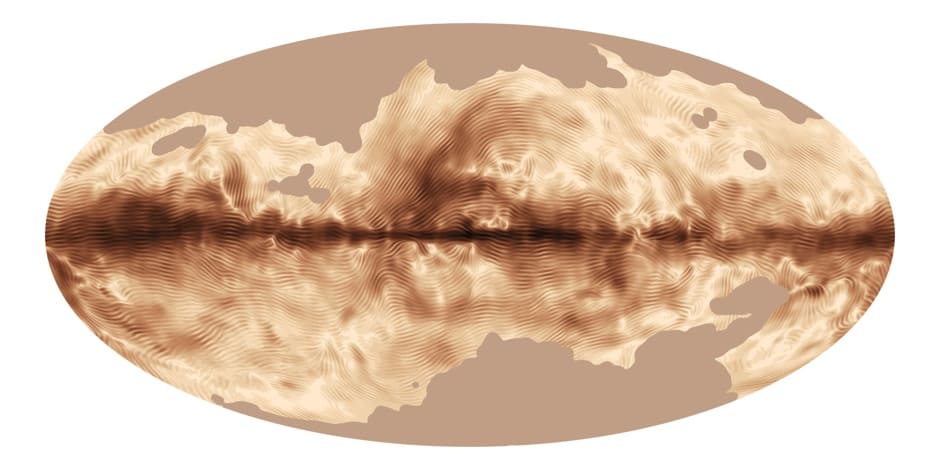An international collaboration of researchers, including members of the Canadian Institute for Theoretical Astrophysics (CITA) at the University of Toronto and the University of British Columbia, has released the world’s first map of the magnetic field lines of our galaxy.
The map, which is being popularly referred to as a ‘fingerprint’ due to the swirling shape that the field lines take on, has been drawn using data from polarized radiation emitted from galactic dust as measured by the Planck Space Telescope.
The dust in question is ubiquitous in the galaxy and is composed of cold, sparsely distributed grains. These microscopic grains are not precisely spherical in shape and thereby align with the magnetic field of the galaxy and emit light in non-random directions, known as polarization. The polarization of the light, which is emitted at high frequencies, reveals the orientation of the magnetic field lines and can be detected by Planck’s aptly named High Frequency Instrument (HFI).
The HFI is one of the contrivances that Planck has been equipped with in order to achieve its specific purpose of seeking polarization in the earliest light in the Universe. This primordial light can be observed in the form of microwave radiation throughout all of space and all of time. It is called the Cosmic Microwave Background (CMB).
The detection of a specific type of polarized light in the CMB, called B-mode polarization, would have significant implications all across the realm of theoretical astrophysics, including a long sought-after confirmation of the Inflation Theory. In March 2014, the BICEP2 collaboration reported that they have detected the B-mode signal with their South Pole based instruments. The concern at Planck is whether the presence of the newly mapped polarized dust radiation that originates right in our own cosmic backyard will obscure the ancient and much weaker CMB.
However, the findings on dust emission may shed light on the extent to which the patterns of galactic polarization can mimic the cosmological signal.
“The galactic dust is fundamental to us,” said Professor J. Richard Bond, Director of Cosmology and Gravity at CITA in an interview with The Varsity, “because you have to try and understand it if you want to learn about this very tiny signal from the early universe… The complexity of the dust may be an ultimate limitation on how well we can do, and the question is how big of an affect it is and how well we can separate that dust emission out from what’s lying below.”
The results will be published in four papers in the Journal of Astronomy & Astrophysics. However, according to CITA, we can expect more from the dust emission data later on in the fall that may be instrumental to the current cosmological revolution. “
The story on dust isn’t over,” said Bond. “There’s many more interesting things that can be done with the dust emission; BICEP looked at one frequency and hoped that the dust wouldn’t emerge as a limitation to what they can do, and we know that Planck will be able to say something about this. So stay tuned.”


